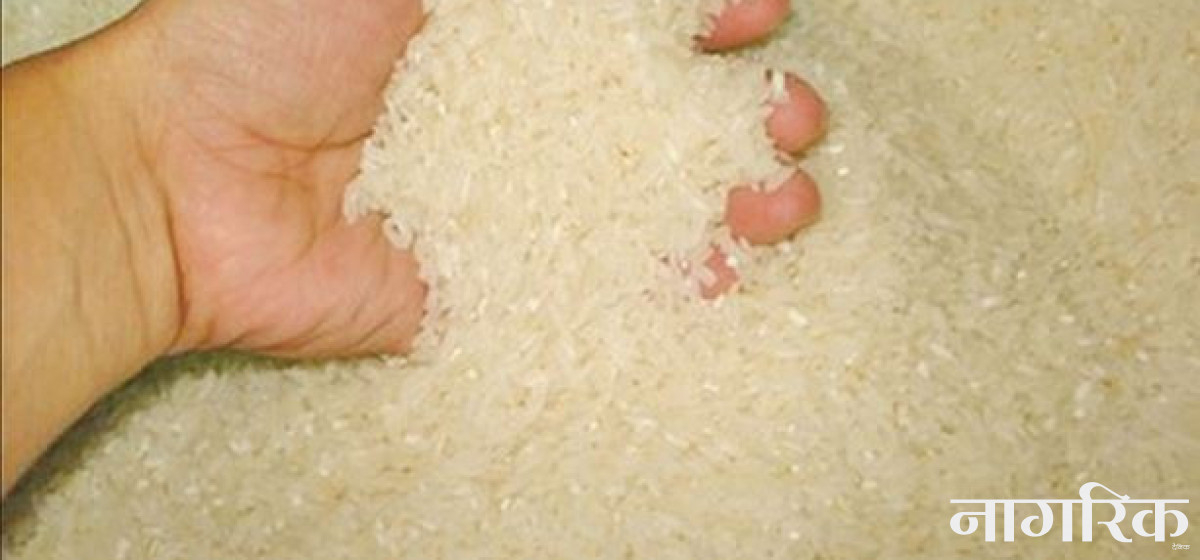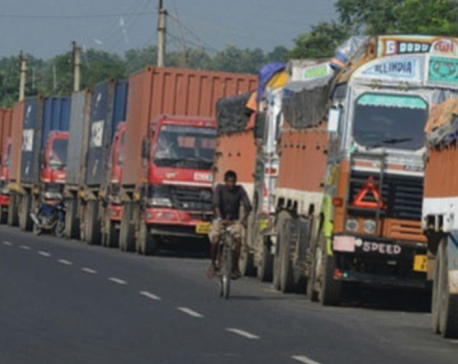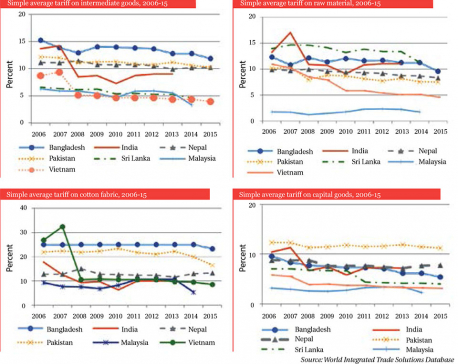
OR
Nepal imported paddy, rice worth over Rs 33.6 billion in 11 months of current FY
Published On: July 1, 2023 08:00 AM NPT By: Republica | @RepublicaNepal

KATHMANDU, July 1: Nepal imported rice and paddy worth over Rs 33.6 billion in the first 11 months of the current fiscal year despite the government’s commitment to become self-sufficient in food by increasing agricultural production.
According to the Department of Customs, paddy and rice worth Rs 33.63 billion were imported between mid-July 2022 to mid-June 2023 in the current fiscal year (FY 2022/23).
Rice production has not been able to increase as farmers lack advanced varieties of seeds, chemical fertilizers when needed, irrigation facility, machinery and tools for planting paddy, etc. While the production and productivity of paddy has decreased, consumption on the other hand has increased. As a result, Nepal had to depend on imports from foreign countries to meet the demand for rice.
Former agriculture secretary Yogendra Bahadur Karki said that the country is compelled to import rice because the production is not sufficient to meet the demand.
“Farmers have to endure problems such as the availability of seeds, irrigation facility and chemical fertilizers,” Secretary Karki said, “Therefore, Nepal is not able to increase rice production, which is essential for import substitution.”
The government celebrated the 20th National Paddy Day on Friday with the slogan ‘Climate adapted farmer-friendly technology to increase paddy production’. Even as the National Paddy Day is celebrated every year on Asar 15 of the Nepali calendar (June 30 this year), the country is becoming increasingly dependent on rice imports.
Nepali consumers are using rice produced in neighboring countries like India, China as well as America. Medium-grain rice worth about Rs 190 million has been imported from the USA this year. Similarly, rice is also imported to Nepal from Vietnam, Thailand, Bhutan.
Nepal, which once exported rice, is now dependent on imports. However, no initiatives have been taken to increase paddy production in the country. Although the government and political party leaders chant slogans of agricultural self-sufficiency, it has not been seen in practice.
Production has not increased due to the lack of modernization, mechanization and commercialization in agriculture. Although six metric tons of paddy per hectare is grown abroad, Nepal struggles to produce even four metric tons of paddy per hectare. At present, only 3.8 metric tons of paddy per hectare is grown in Nepal. Currently, rice is cultivated in an area of about 1.5 million hectares across the country.
Former secretary Karki says that the country should produce 6.4 million metric tons of paddy to stop rice imports.
According to him, the productivity of rice should be increased to four metric tons per hectare. He was of the view that rice should be cultivated in 1.6 million hectares of land including pre-monsoon paddy, and irrigation facilities should be increased from 35 percent to 55 percent in order to meet the domestic demand. “Farmers should be provided with advanced varieties of seeds and chemical fertilizers on time,” said Karki, “An effective plan should be made to increase production."
Hari Bahadur KC, director general of the Department of Agriculture said that Nepal is importing rice due to low productivity. He argues that imports of rice have also increased due to the practice of eating rice twice a day in the mountains and hills. “Medium-grain rice is imported from abroad,” Director General KC said, “We are working to formulate an effective plan to increase production.”
KC said that to increase the production, they are encouraging the cultivation of hybrid paddy, expanding irrigation facilities, regular supply of fertilizers, and harvesting pre-monsoon paddy. “We have also conducted a paddy mission program,” KC said, “We have encouraged paddy cultivation to increase production.”
To increase production, work is being carried out to develop high yielding rice varieties from Nepal Agricultural Research Council (NARC) along with an increase in distribution of subsidies for chemical fertilizers.
According to the department, the government determines the minimum support price of paddy each year and also provides subsidies on machinery and tools. Officials of the Ministry of Agriculture say that rice import has increased due to Nepalis’ habit of eating rice as a staple food.
Production has not increased also because of the traditional farming system. Even now, paddy cultivation is done in a traditional way subsistence agriculture and non-commercial farming is prevalent.
Paddy experts say that productivity has not increased due to the lack of irrigation facility, fertilizers and quality seeds. Other reasons include low organic matter in the soil and poor fertility and lack of balanced fertilizers.
Even now, farmers use four-and-a-half-decade-old paddy seeds. About 85 percent of farmers are using old paddy seeds. Although the production will increase by 15 to 20 percent by introducing advanced varieties of paddy seeds, the farmers have not been able to get the seeds of advanced varieties.
In the last fiscal year, 5.1 million metric tons of paddy was produced in the country. Last year, unseasonal rainfall damaged 424,000 tons of paddy planted in 111,609 hectares of land across the country. In the fiscal year 2020/21, 5.6 million metric tons of paddy was produced in the country.
You May Like This

Nepal’s foreign trade declined around Rs 37 billion in the first 10 months of current FY
KATHMANDU, May 21: Nepal’s total foreign trade declined Rs 36.69 billion in the first 10 months of the current fiscal... Read More...

Can Nepal absorb the shockwaves of stagflation and growth myth?
We are not sacrosanct to global events and sustain some forms of impact because Nepal heavily depends on imports of... Read More...

WB recommends Nepal reduce import tariff on raw material
KATHMANDU, Dec 22: The government should move away from import-based taxation by lowering tariff rates if it wants to improve the... Read More...











Just In
- Challenges Confronting the New Coalition
- NRB introduces cautiously flexible measures to address ongoing slowdown in various economic sectors
- Forced Covid-19 cremations: is it too late for redemption?
- NRB to provide collateral-free loans to foreign employment seekers
- NEB to publish Grade 12 results next week
- Body handover begins; Relatives remain dissatisfied with insurance, compensation amount
- NC defers its plan to join Koshi govt
- NRB to review microfinance loan interest rate







Leave A Comment